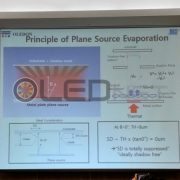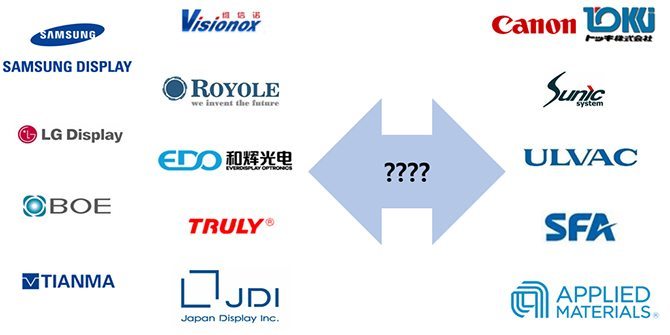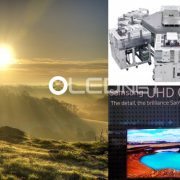초고화질 해상도(UHD)의 OLED 스마트폰 시대 열릴까
최근 스마트폰 기기를 통한 VR 컨텐츠 체험이 증가하는 추세로 인해 고해상도 스마트폰이 요구되고 있으나, 2014년 Galaxy Note4에 최초로 QHD OLED가 적용된 이후 3년 동안 OLED 스마트폰의 해상도는 여전히 QHD급에 머물고 있다.
OLED 스마트폰의 해상도를 결정하는 핵심은 발광층의 증착 공정이다. 현재 적용 되고 있는 상향식 증착 방식은 기판과 FMM(fine metal mask)를 수평으로 하여 증착 장비 상부에 배치한 뒤 하부의 리니어 소스에서 유기물을 증발시켜 RGB 발광층을 형성하는 방식이다.
UHD급 이상의 고해상도 OLED를 제조하기 위해서는 15um 두께 이하의 얇은 FMM이 필요하나 FMM이 얇아질수록 patterning, 인장, 용접등의 기술적인 이슈가 발생하여 양산적용이 어렵다.
이러한 문제들을 극복하기 위해 수직형 증착과 면소스 증착, 다양한 metal mask patterning 기술들이 개발되고 있다.
기판과 FMM를 수직으로 배치하는 수직형 증착기는 일본의 Hitachi에서 최초로 개발하였으며, Canon tokki도 Finetech Japan 2013에서 6세대 수직 증착 방식의 장비를 공개한바 있으나 현재 양산에 적용되고 있진 않다.
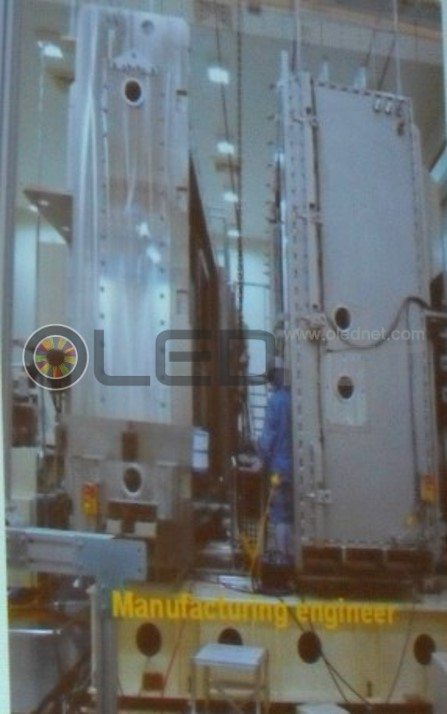
<Finetech Japan 2013에서 공개 된 Canon tokki의 Gen6 vertical type evaporator>
하지만 최근 전자신문에 따르면 Applied Materials에서 6세대 flexible OLED용 수직 증착 방식의 증착 장비를 개발했다고 밝혔으며, 일본의 Japan Display에서 test 중이라고 언급한바 있다.
리니어소스가 아닌 면소스를 이용한 증착 방식도 검토되고 있다. 면소스 증착 방식은 유기물을 금속면에 1차로 증착하여 면소스를 만든 후, 이를 재증발시켜 기판에 유기물 박막을 형성하는 원리로써 지난 iMiD 2017에서 OLEDON의 황창훈 대표는 면소스 증착 방식을 통해 2250 ppi의 고해상도 OLED 구현이 가능하다고 언급하였다.
Metal Mask patterning 기술로는 전주도금(electro forming)과 laser patterning 기술이 주로 거론되고 있다. 전주도금 방식은 Wave Electornics와 TGO Technology, Athene등의 업체에서 개발하고 있으며, laser patterning 기술은 AP Systems에서 개발중에 있다.
이처럼 다양한 관점에서 진행되고 있는 고해상도 OLED 구현을 위한 개발이 현재의 문제를 극복하고 OLED 스마트폰의 UHD 해상도 구현에 기여할 수 있을지 많은 관심이 집중되고 있다.
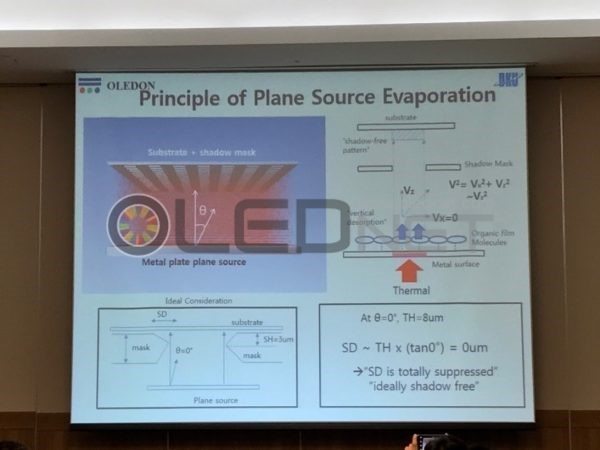
<OLEDON사가 개발한 면소스 증착 기술 원리>

